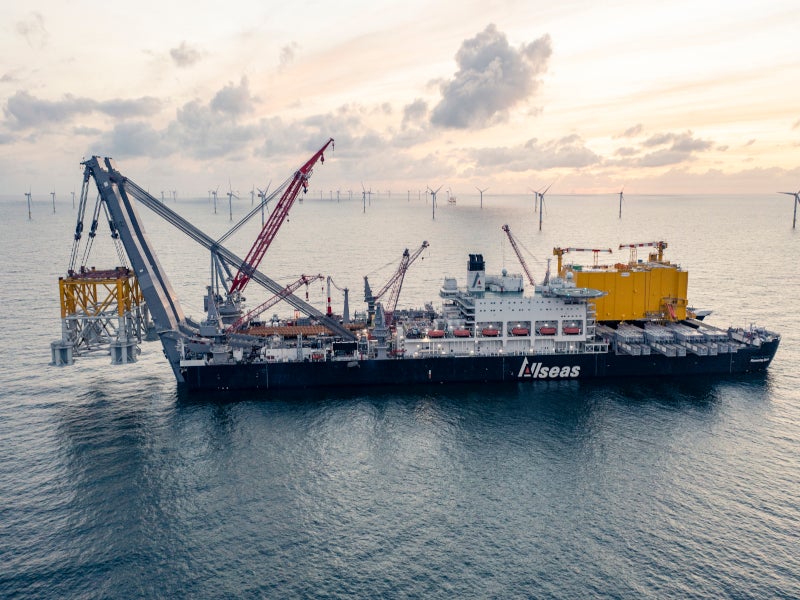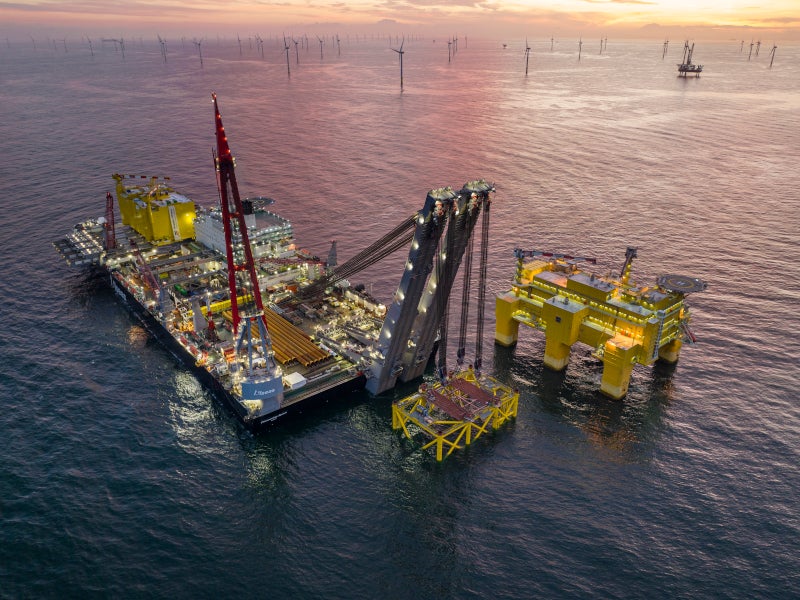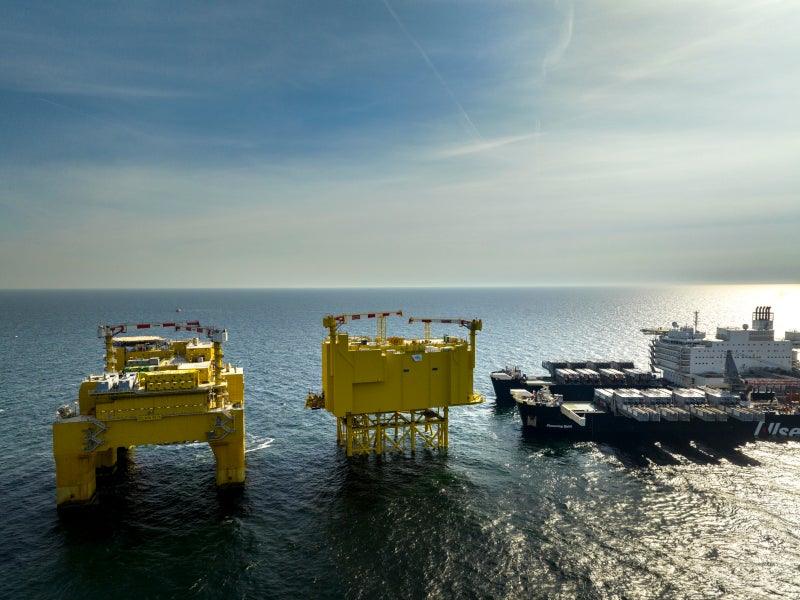The DolWin6 project, developed by European grid operator TenneT, is a 90km-long direct current (DC) connection with a transmission capacity of 900MW.
The project connects the North Sea Cluster 3 offshore wind farms to the German power grid, offering renewable energy connections to more than one million homes.
Construction of the DolWin6 project commenced in July 2017 and was completed in September 2023.
The project marked the completion of TenneT’s 13th German offshore grid connection and increased the company’s total offshore transmission capacity to more than 11.5GW.
DolWin6 transmission project details
DolWin6 includes the Dolwin kappa offshore converter station, a sea cable and an underground land cable of 45km each, a land converter station, and a transformer station.
The transmission cable features two parallel, cross-linked polyethylene-insulated 320kV high-voltage direct current (HVDC) cables. The submarine section of the cable uses a copper core and weighs 38kg per metre while the land cable section uses an aluminium core. The land cable has a diameter of 12.6cm and weighs 16.1kg per metre.
The project uses a 320kV DC CS direct-current compact switchgear, which is gas-insulated and requires up to 95% less space compared to current air-insulated options. It also uses Siemen’s HVDC Plus converter technology, which is a voltage-sourced converter with a modular multilevel converter design.
DolWin kappa platform details
The 11,000-tonne (t) DolWin kappa offshore HVDC converter platform is designed for operation at water depths of approximately 29m and has an operational life of 30 years.
The platform is positioned on a 5,000t foundation structure and rises 53m above the water surface. The topside is 31.6m tall and is equipped with components including transformers, converters, safeguards, and switchgear. The steel jacket structure is 21.45m tall and weighs 5,250t. The platform foundation uses ten piles, each weighing 380t.
The platform is bridge-linked to the existing DolWin beta platform, enabling logistic synergies between both platforms. The DolWin6 platform has no additional accommodations and no helicopter landing pads.
A direct 10kV cable connection between the two platforms eliminates the need for installing permanent diesel generators on the DolWin kappa platform.
Transmission details
The three-phase 155kV alternating current (AC) produced by the wind farms is converted into 320kV DC at the DolWin kappa HVDC converter platform. The converted current is transported to land using the sea cable. The cable traverses the island of Norderney via horizontal boreholes to minimise its environmental impact on the island.
The transmission line makes landfall at Hilgenriedersiel, from where the underground cable further connects to Emden, Germany. At Emden, DC current is converted back into three-phase AC at a converter station and is fed to the national grid through a transformer station.
Contractors involved
Siemens provided HVDC power transmission technology for the project, including the construction of the HVDC onshore station.
French supplier Nexans was awarded a €100m contract by TenneT to provide DC cables and installation services for the project in July 2017. The scope of the contract also included the installation of a fibre-optic cable for data transfer.
Dragados Offshore, as the general contractor, was responsible for the construction and installation of the offshore platform.
Energy contractor Allseas installed the DolWin kappa offshore converter station. The installation was performed using the company’s Pioneering Spirit vessel.
Dredging company DEME provided the liquified natural gas-powered cable laying vessel, Living Stone, for the HVDC cable installation.
The design and implementation of the DolWin6 converter system were provided by construction company, Matthäi.
Heating, ventilation, and air conditioning (HVAC) services provider Heinen & Hopman and Teknotherm were awarded the contract for the design and delivery of the HVAC system for the offshore converter station in January 2019.
SeaRenergy was awarded the contract for offshore infrastructure services, which involved integrated onshore and offshore logistics services.






